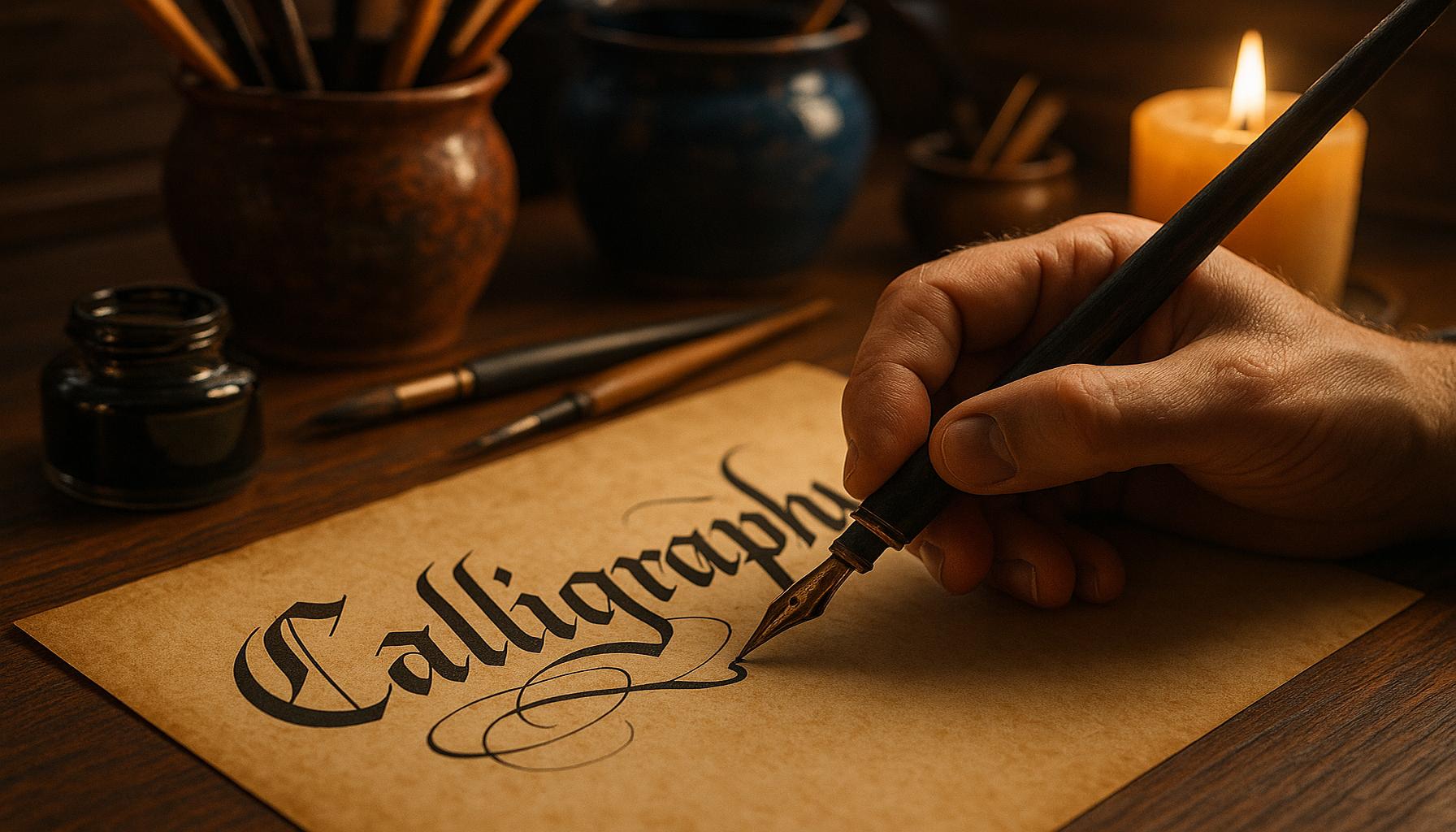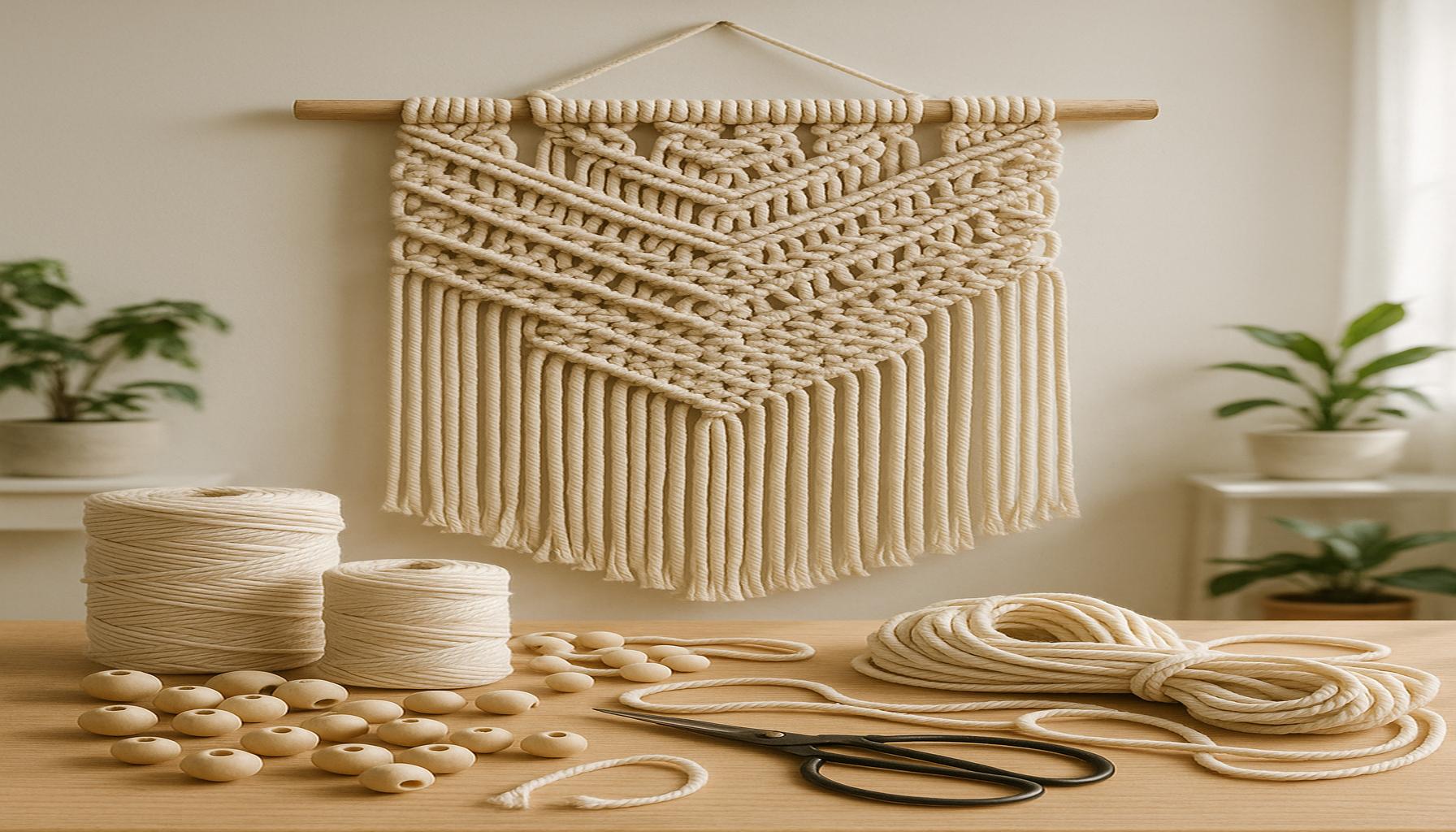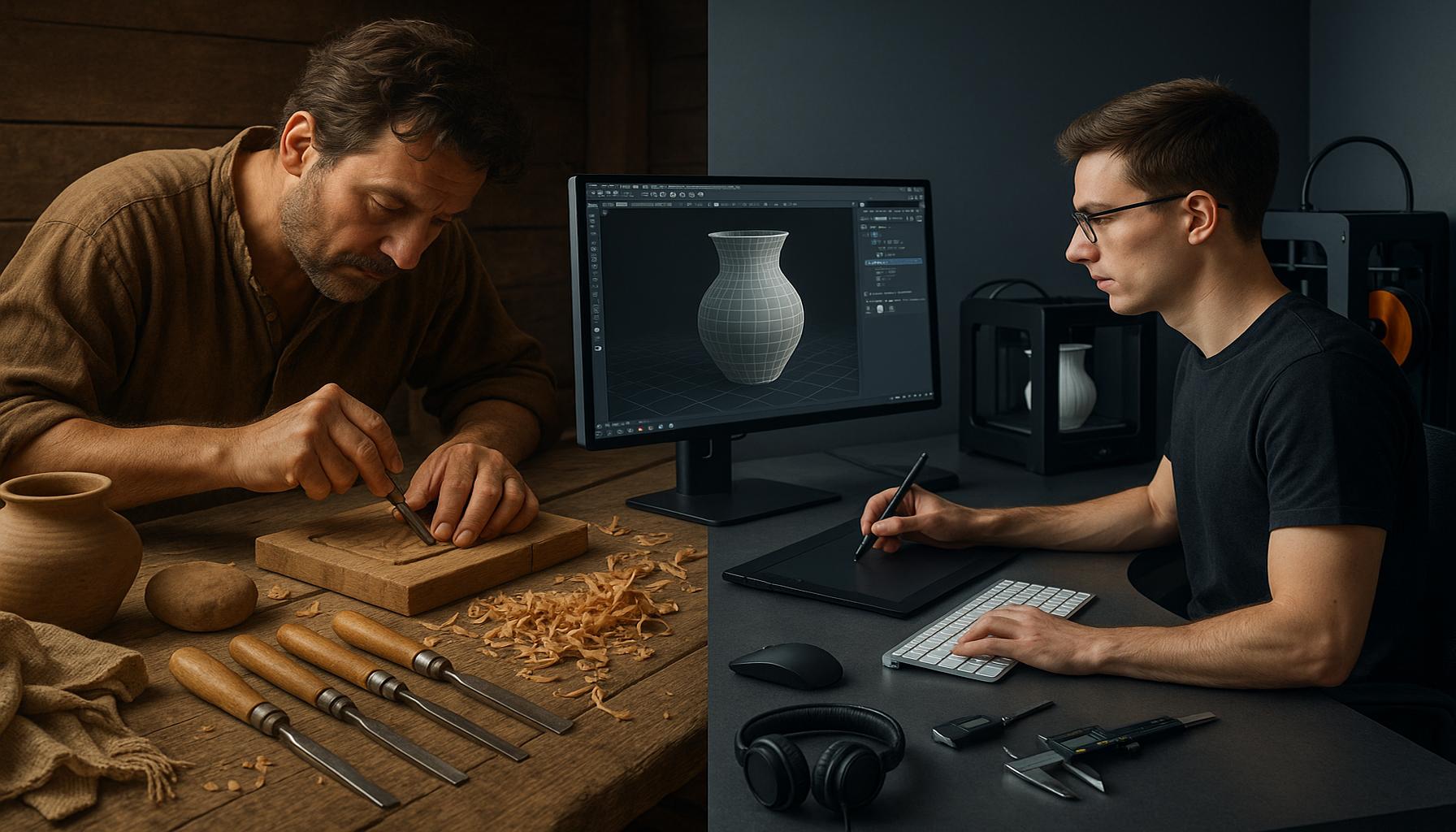The Art of Calligraphy: Transforming Letters into Works of Art

The Allure of Calligraphy
At its core, calligraphy is a celebration of the written word. It skillfully blends artistic expression with technical mastery, creating a visual language that resonates on multiple levels. This ancient practice, seen in various forms across the globe, goes beyond mere communication to invoke a sense of beauty and contemplation in every letter and curve.
Historically, calligraphy has evolved alongside cultural movements, reflecting the philosophies and aesthetics of different eras. For example, in East Asia, the art of Chinese calligraphy emphasizes the harmony and balance of each stroke, rooted in the principles of Confucianism and Taoism. Chinese characters are not just letters but bearers of profound meaning and emotion, showcasing the artist’s character and mood. In contrast, Western calligraphy, particularly during the Renaissance, found its expression in elegant scripts such as Gothic and Italic, where the flourish of quills and ink left an indelible mark on manuscripts and documents. To illustrate, a historical figure such as Leonardo da Vinci not only created breathtaking art but was also a master calligrapher, blending writing with his artistic endeavours.
Diverse Styles and Techniques
The world of calligraphy is rich with diversity, offering a wide array of styles, such as the bold strokes of Blackletter to the modern fluidity of Brush Lettering. Each style serves a distinct purpose and conveys different emotions. For instance, while wedding invitations often feature flowing scripts that evoke romance, corporate branding might lean towards sleek, minimalist lettering to convey professionalism.
Essential Tools
What sets calligraphy apart is not only the artistic flair but also the specialized tools that enhance the craft. Pens such as dip pens, brush pens, and fountain pens, combined with a spectrum of inks—ranging from vibrant colors to shimmering metallics—transform the writing experience. High-quality parchment or textured paper also plays a critical role, as the surface can greatly affect the overall appearance and feel of the letters being created.
Contemporary Relevance
In the digital age, where typed text dominates communication, the resurgence of interest in calligraphy can be attributed to its tangible and personal nature. Modern applications are numerous, from personalized wedding invitations to logos and branding materials, embedding a unique touch in a world increasingly reliant on technology. Artists often share their work on platforms like Instagram, inspiring a new generation to engage with this art form.
Regardless of whether you’re a seasoned artist or simply curious, calligraphy offers an invitation to explore your creativity. Dive into the intricate history, learn the techniques, and experience the enduring beauty of calligraphy, a testament to the power of handwritten words in both personal expression and cultural legacy.
DIVE DEEPER: Click here to find out more
Unlocking the World of Calligraphy
As one delves deeper into the art of calligraphy, it becomes evident that mastery of this skill involves both practice and patience. The beauty of calligraphy lies not just in the final output, but in the meticulous process of creating each stroke and curve. Calligraphers often embark on a journey that begins with understanding the fundamentals, moving towards the development of a personal style.
The Fundamentals of Calligraphy
Before one can transform letters into art, it is essential to grasp the foundational elements. Calligraphy is often segmented into a few key components: stroke techniques, letterforms, spacing, and composition. Being adept at these elements can significantly influence the overall aesthetic quality of the work.
- Stroke Techniques: Each letter is constructed from a series of strokes. Mastering upstrokes and downstrokes is crucial, as they dictate the character’s width and overall form.
- Letterforms: Understanding the anatomy of letters—such as ascenders, descenders, and crossbars—can help create more balanced and harmonious designs.
- Spacing: The space between letters, known as kerning, can affect readability and visual appeal. Proper spacing is vital to achieving a polished look.
- Composition: The arrangement of text on a page can enhance its attractiveness. Calligraphers often experiment with varying sizes and orientations to create dynamic compositions.
The Evolution of Styles
One of the most captivating aspects of calligraphy is the evolution of its styles over time. Different cultures have contributed unique scripts that reflect their societal values and artistic inclinations. For instance, in the United States, while the charming Pennsylvania Dutch decorative style echoes the folk arts of early America, contemporary styles incorporate influences from around the world, resulting in a vibrant blend of traditions. Additionally, the popularization of calligraphy in modern design combines traditional techniques with innovative ideas, showcasing a fusion of old and new.
Artists like Jessica Hische and Sean McCabe exemplify the modern calligraphy movement, captivating audiences with their unique interpretations that challenge conventional boundaries. They invite followers to appreciate the nuances of each letter, encouraging budding calligraphers to experiment and find their own voice in this time-honored tradition.
Workshops and Resources
For those intrigued by the art of calligraphy, a plethora of resources and workshops are available. Many local art studios and community colleges offer classes catering to all skill levels. Online platforms like Skillshare and Udemy also provide an extensive range of tutorials for learning various techniques at one’s own pace. Participating in calligraphy communities, both local and online, can also foster growth and connection among artists of all expertise levels.
Ultimately, the journey into calligraphy is not just about mastering strokes; it is an exploration of one’s self-expression through letters that transform into art. This ongoing resurgence of interest signifies not only a desire for personal creativity, but also a deeper appreciation for the beauty in handcrafted arts. Whether you aim to craft an elegant wedding invitation or express sentiments through personalized gifts, the art of calligraphy offers limitless opportunities to explore the world of written design.
| Category | Advantages |
|---|---|
| Aesthetic Appeal | Calligraphy enhances the visual appeal of written communication, making ordinary letters feel special and captivating, perfect for invitations or personalized notes. |
| Cultural Significance | Calligraphy carries a rich history in various cultures, showcasing the artistry of language and connecting to traditional practices, thus adding depth to the art form. |
Calligraphy, seen as an artistic endeavor, allows individuals to transform simple letters into stunning visuals. Each stroke, each curve tells a story—an expression of creativity unbound by conventional writing. As artists delve deeper into calligraphy, they not only embrace aesthetic appeal but also anchor their work in a rich cultural heritage that spans centuries.The diverse styles of calligraphy—from elegant Italic to bold Gothic—offer artists a unique medium to explore their expression and creativity, making it an ideal practice for those looking to personalize their writing or craft bespoke artworks. Enthusiasts and learners alike may find joy in the meticulous process of honing their skills, drawing inspiration from historical masterpieces, and experimenting with various tools and inks that enhance the overall experience. Exploring the intricacies of this art form can lead to a greater appreciation for the beauty of letterforms and their place in communication.
DISCOVER MORE: Click here to uncover the healing power of photography
Personalizing Your Calligraphic Journey
As you explore the enchanting realm of calligraphy, it becomes clear that personal style plays a pivotal role in the creative process. Each calligrapher brings their unique perspective to the craft, influenced by their cultural background, artistic inclinations, and life experiences. This individuality enables a profound connection between the creator and the art form, allowing for distinct interpretations of traditional styles.
Finding Your Signature Style
Calligraphy is not a monolith; rather, it is a tapestry woven from a myriad of styles and influences. To find a personal voice within this tradition, beginners are encouraged to experiment with different scripts. For instance, the elegant Italic style speaks to those who appreciate fluidity and grace, while the bold and striking Gothic style might attract those drawn to drama and structure. Additionally, incorporating elements from various cultures—like the swirling curves of Arabic calligraphy or the precise strokes of Chinese characters—can further personal enhance one’s artistic language.
Many calligraphers advise newcomers to keep a “style journal,” where they can document and reflect on their progress. This journal serves not only as a visual record of evolution but also as a repository of inspiration and cherished designs. Over time, these collected pieces can illuminate the path toward a distinctive signature style, embodying the essence of the calligrapher’s journey.
Tools of the Trade
The tools utilized in calligraphy are as varied as the styles themselves. Traditional calligraphers often rely on specific equipment, such as dip pens, brush pens, and a range of nib sizes to produce varying line weights. For instance, the <strong<brause nib is particularly favored for its precision and ability to create fine lines, while broader nibs are ideal for dramatic downstrokes. Furthermore, the choice of ink and paper can greatly impact the final artwork, with some artists favoring textured paper to create depth and character.
In the digital age, many calligraphers also explore the benefits of modern technology. Digital tablets paired with stylus pens offer a new avenue for creativity, allowing artists to experiment and refine their designs with ease. Software such as Procreate or Adobe Illustrator can simulate traditional techniques, making it easier for creators to branch out in an increasingly digital marketplace.
The Therapeutic Aspects of Calligraphy
Beyond mere aesthetics, calligraphy is often celebrated for its therapeutic benefits. The repetitive motions involved in shaping letters can be a form of mindfulness practice, helping artists to develop focus and reduce stress. Many practitioners report a meditative quality inherent in the craft, akin to forms of art therapy. Engaging with the art of calligraphy can encourage a sense of calm, contributing to mental well-being and creativity in other areas of life.
Classes held at community centers and workshops conducted by experienced calligraphers often emphasize the importance of mindfulness in the practice. These settings foster not only technical skill-building but also a communal atmosphere where individuals can share experiences, find inspiration, and cultivate friendships through their shared passion for letters.
The art of calligraphy continues to captivate a diverse audience, driven by the allure of personal expression and connection to a wider artistic lineage. Whether one seeks to document cherished memories, adorn invitations for significant life events, or simply engage in a creative hobby, the transformative power of calligraphy offers endless avenues for self-exploration. This art form has become a playground for creativity, harnessing the beauty of the written word as a means of communicating one’s identity.
DISCOVER MORE: Click here to unleash your creativity
Embracing the Craft of Calligraphy
In conclusion, the art of calligraphy transcends the simple act of writing; it invites individuals into a realm of artistic expression and personal exploration. With each stroke of the pen, one not only crafts beautiful letters but also tells a story, showcasing the transformation of ordinary words into captivating works of art. The journey of learning calligraphy is deeply personal, enriched by the richness of one’s unique style, tools, and cultural influences.
As evidenced by the myriad of styles available—from the flowing elegance of Italic to the robust lines of Gothic—calligraphy offers a platform for creative experimentation. This art form acknowledges that everyone possesses an inherent artistic voice waiting to be heard. Furthermore, the therapeutic benefits associated with the practice highlight its potential for fostering mental well-being, making calligraphy not just a form of art but also a valuable practice for mindfulness.
Whether you’re just starting or have been practicing for years, embracing new techniques and technologies can rejuvenate your passion and deepen your skill set. Engaging with others through workshops and communities enhances the experience, providing support and inspiration along the way. Ultimately, the art of calligraphy stands as a testament to the beauty of written language and its power to connect us to our inner selves and to each other.
For those interested in diving deeper into this charming pursuit, the possibilities are endless. So grab your pens, choose your inks, and embark on the mesmerizing journey of transforming letters into art that resonates with your own unique voice.



